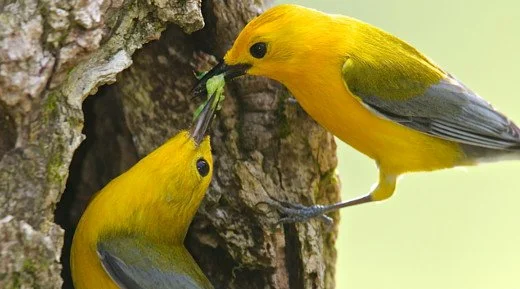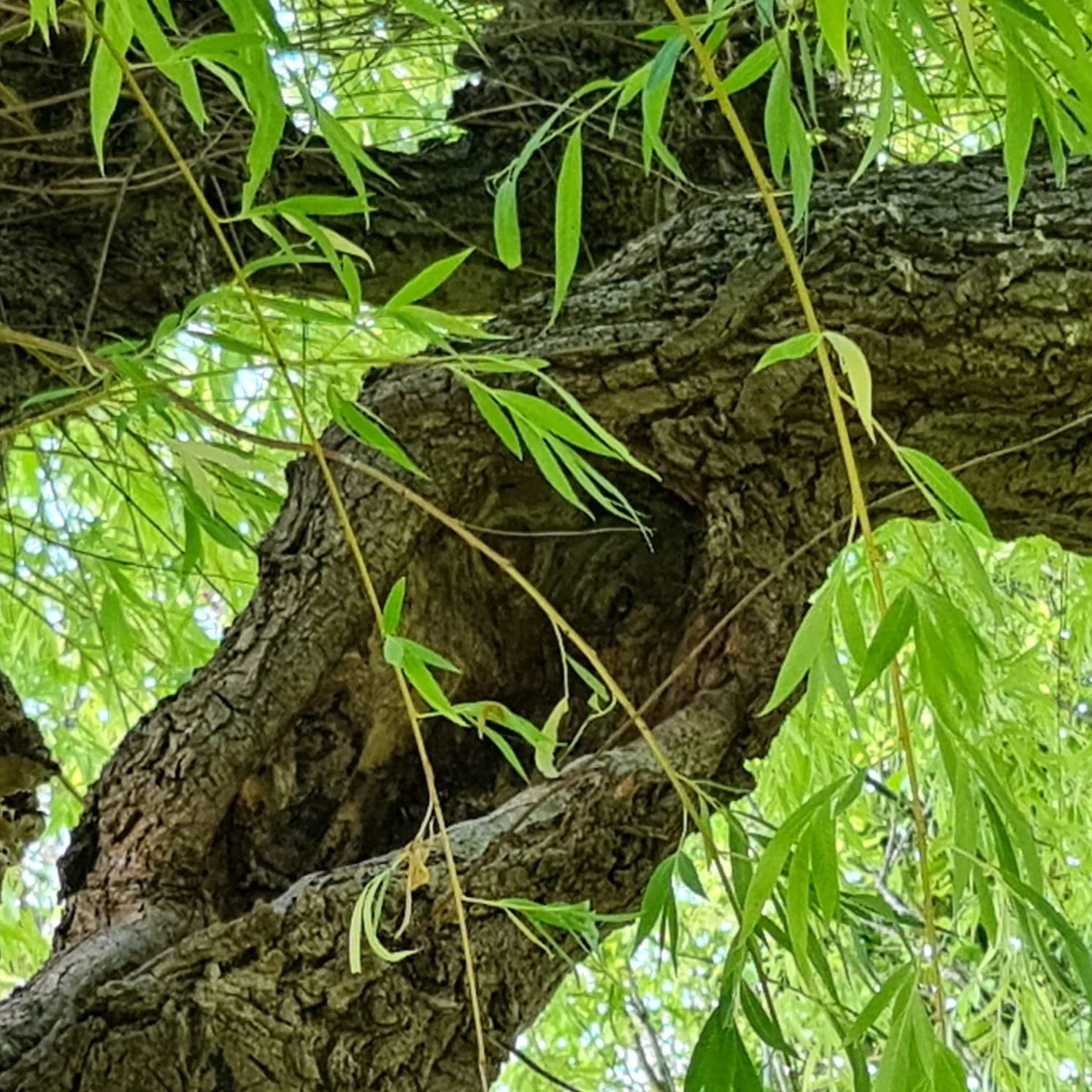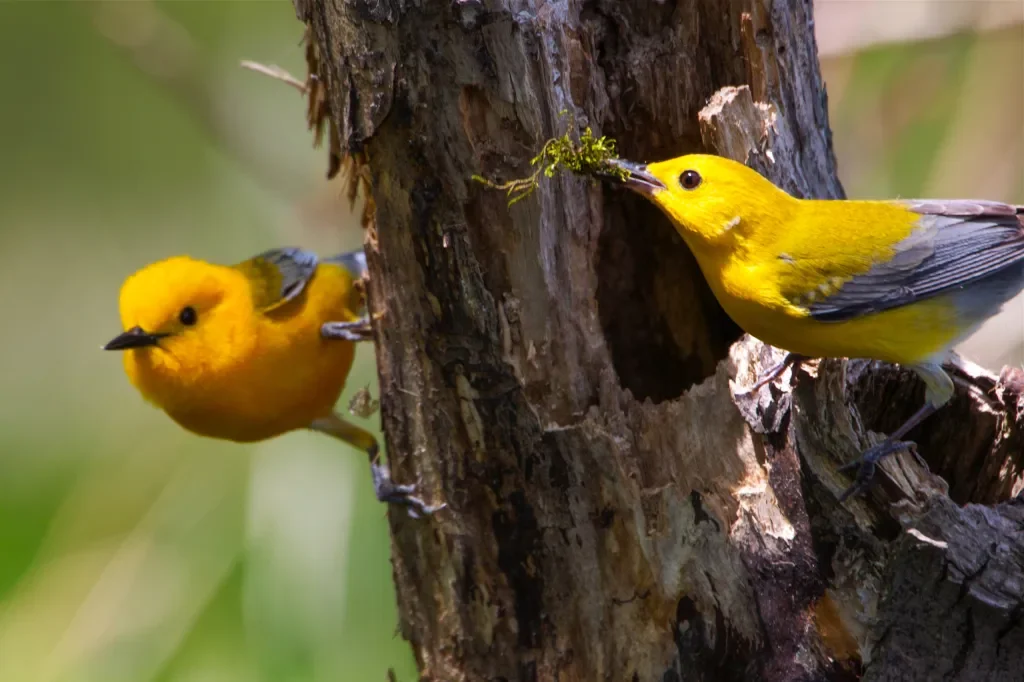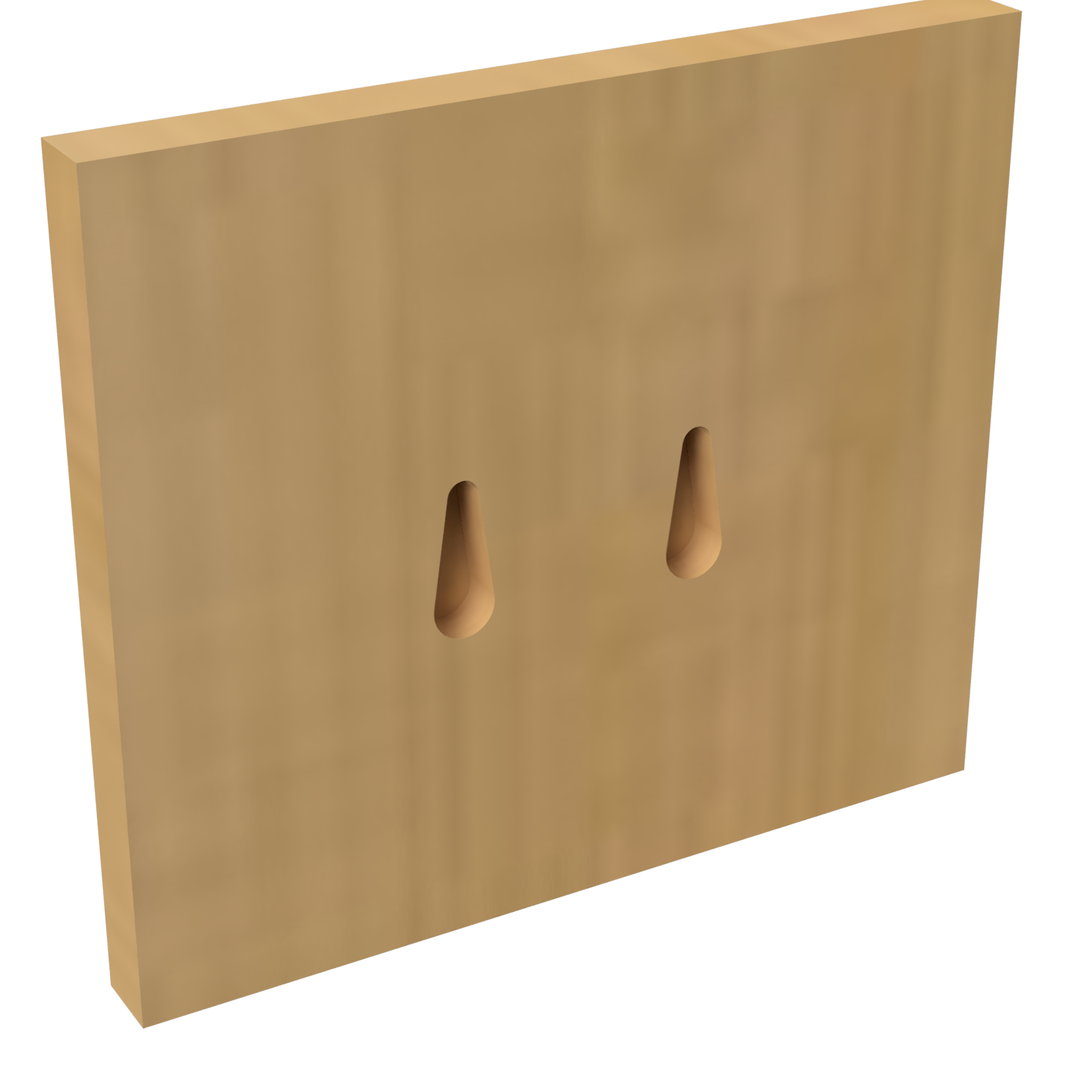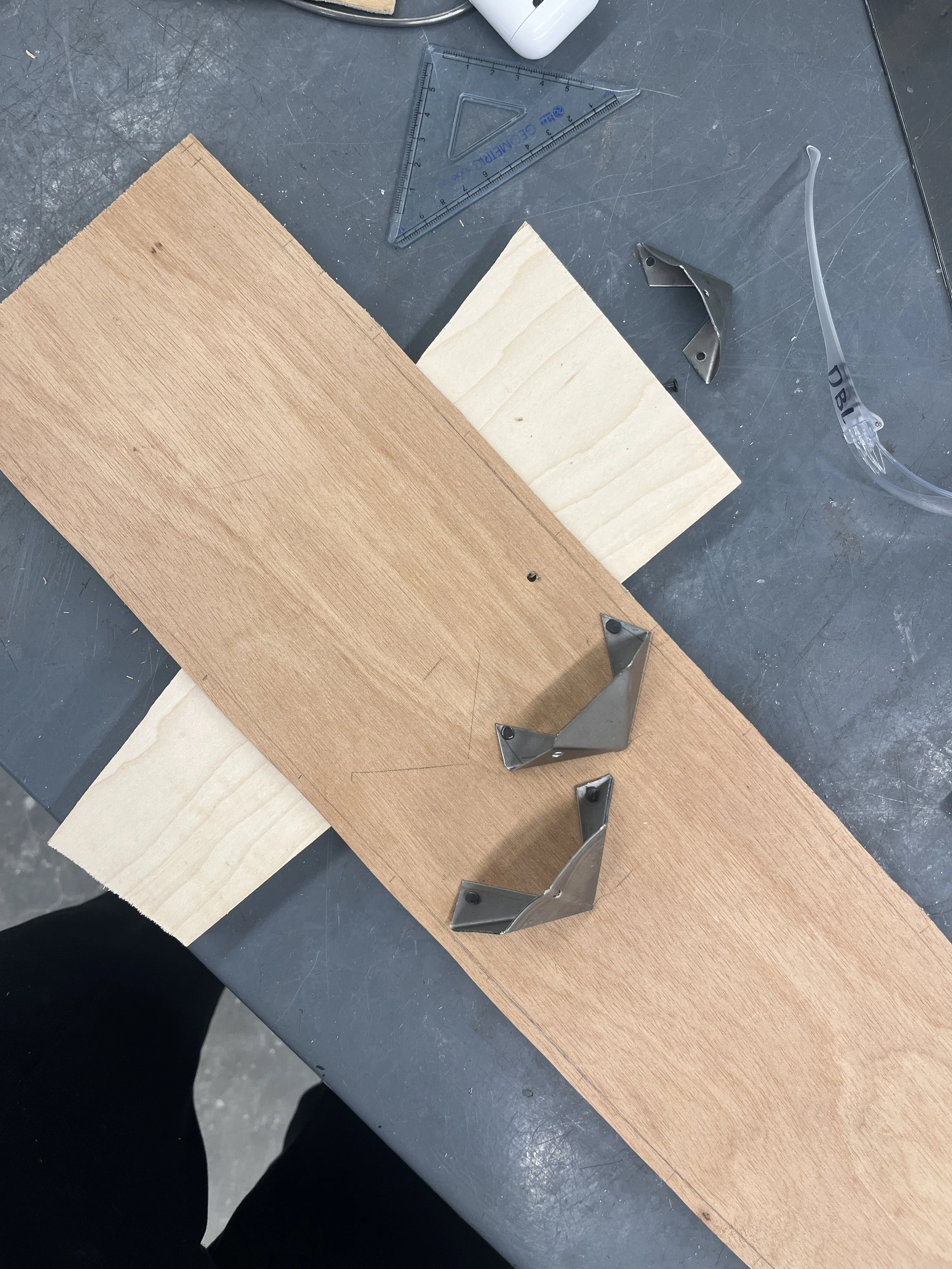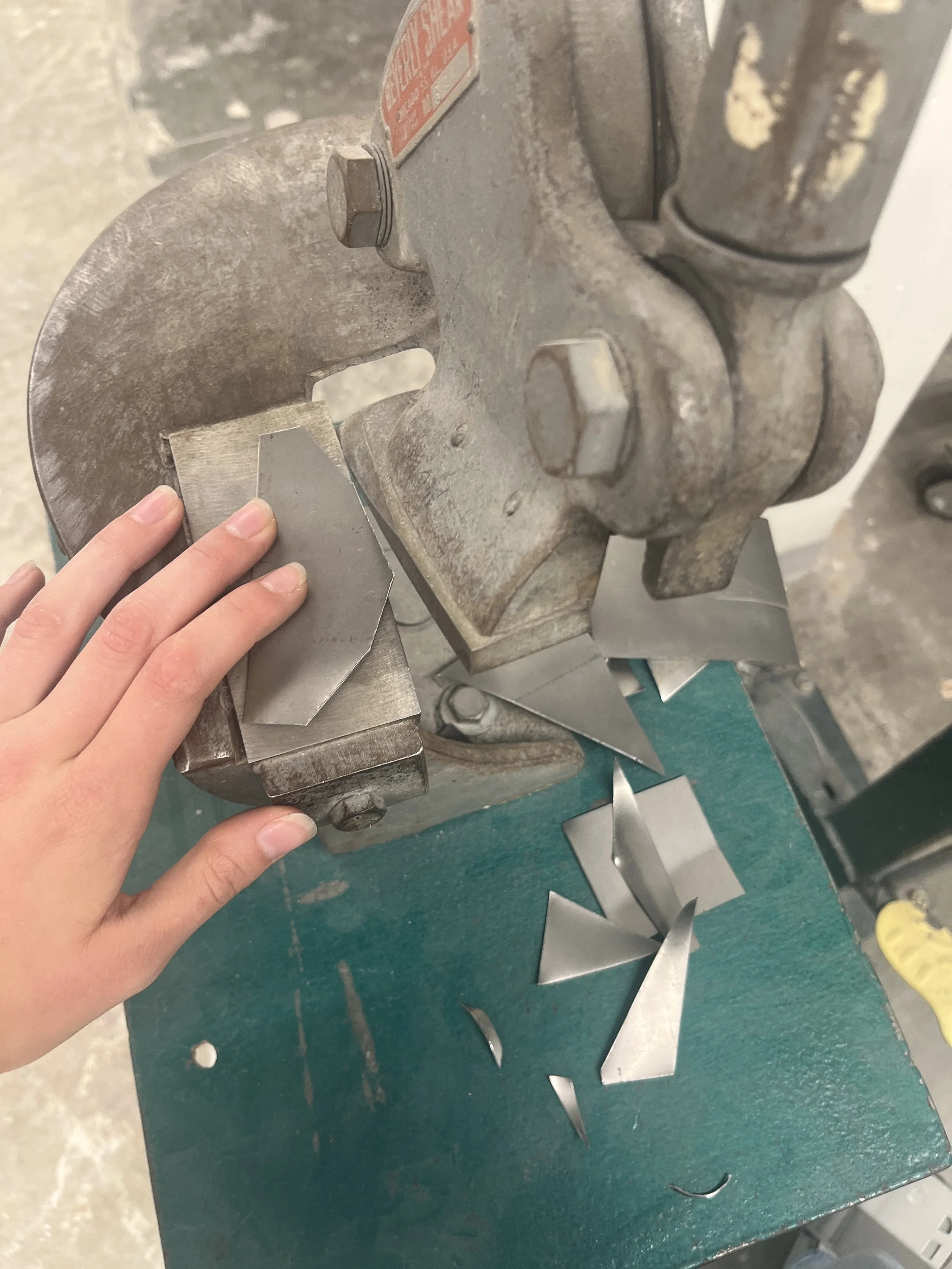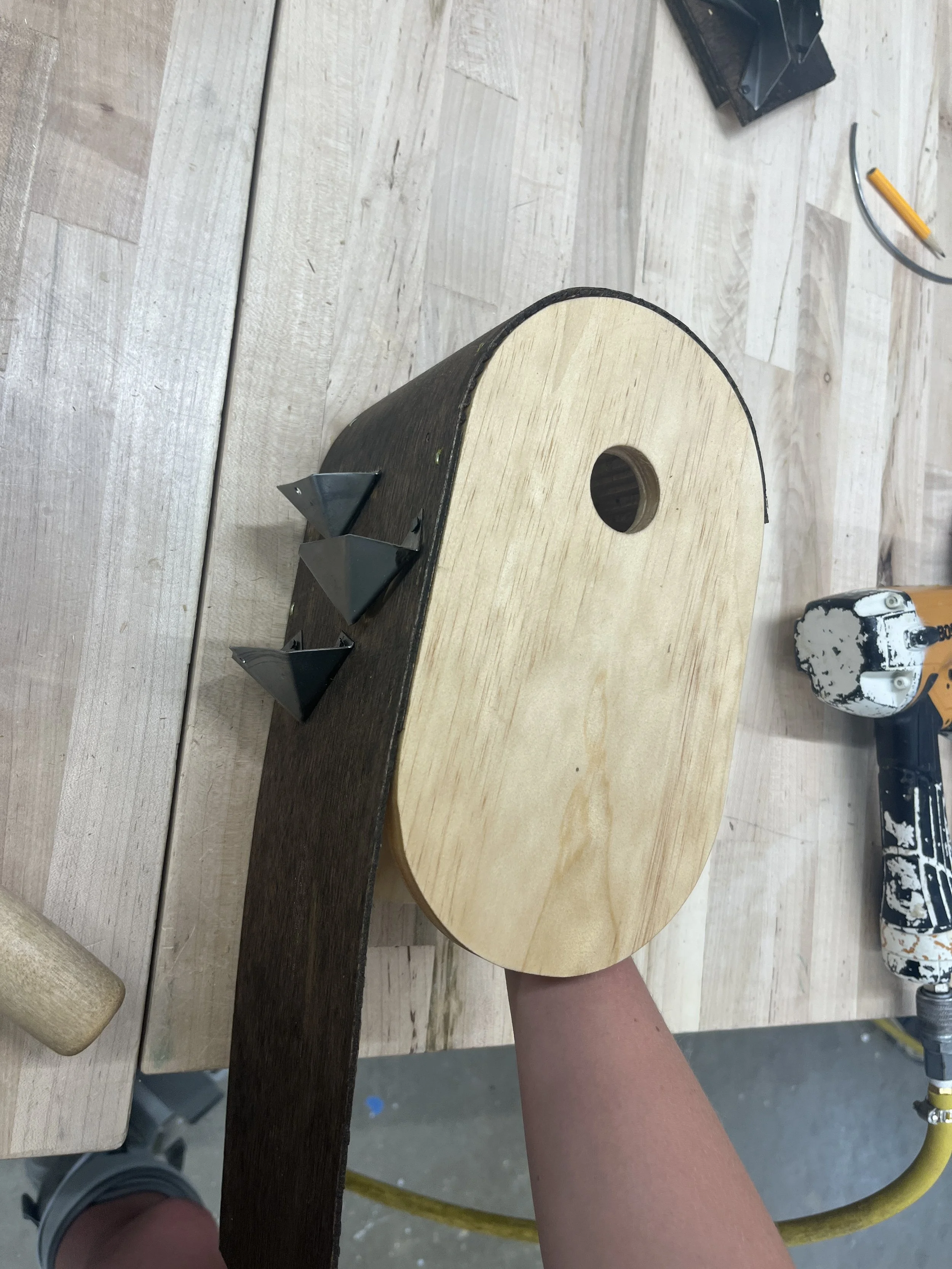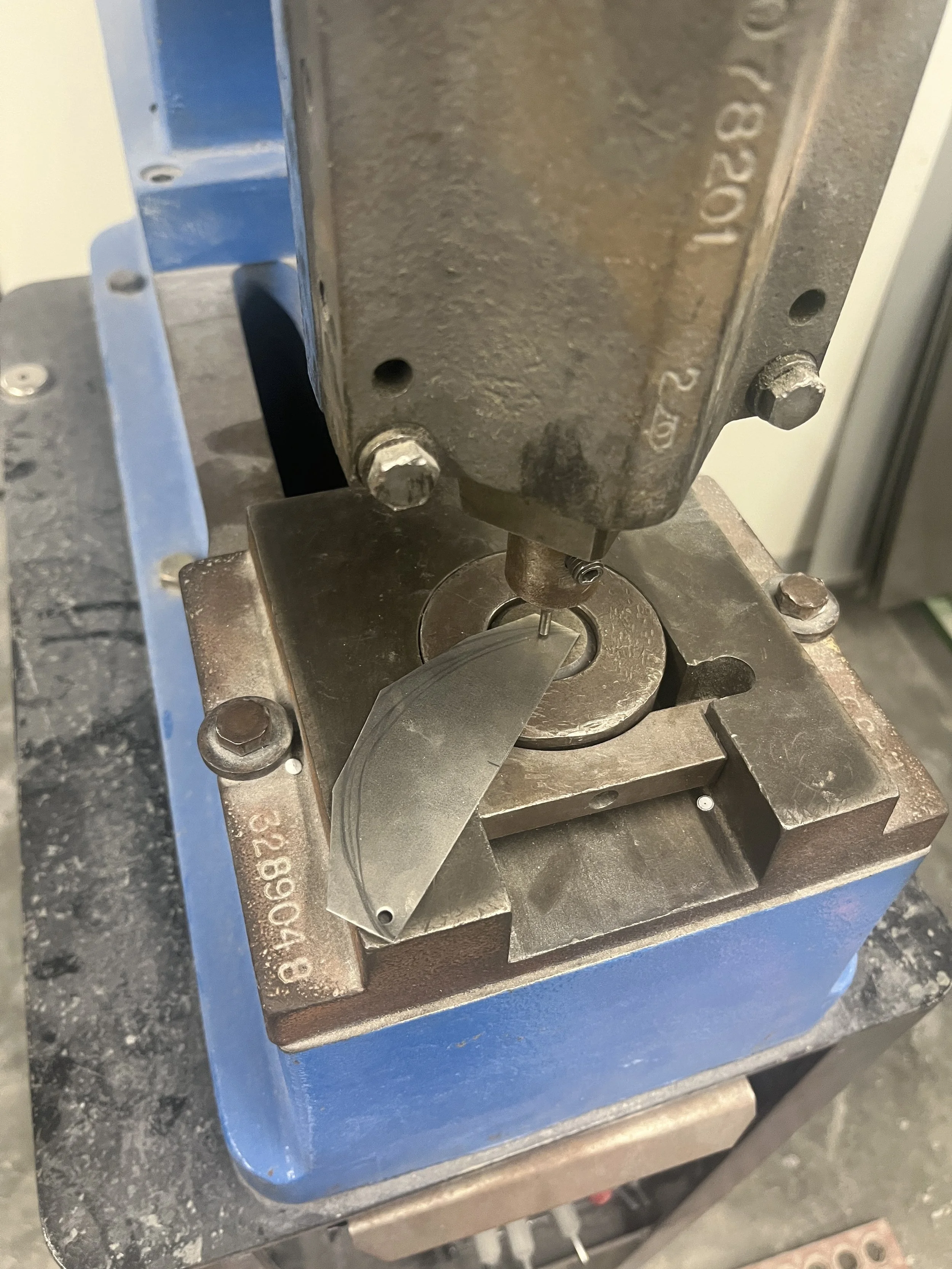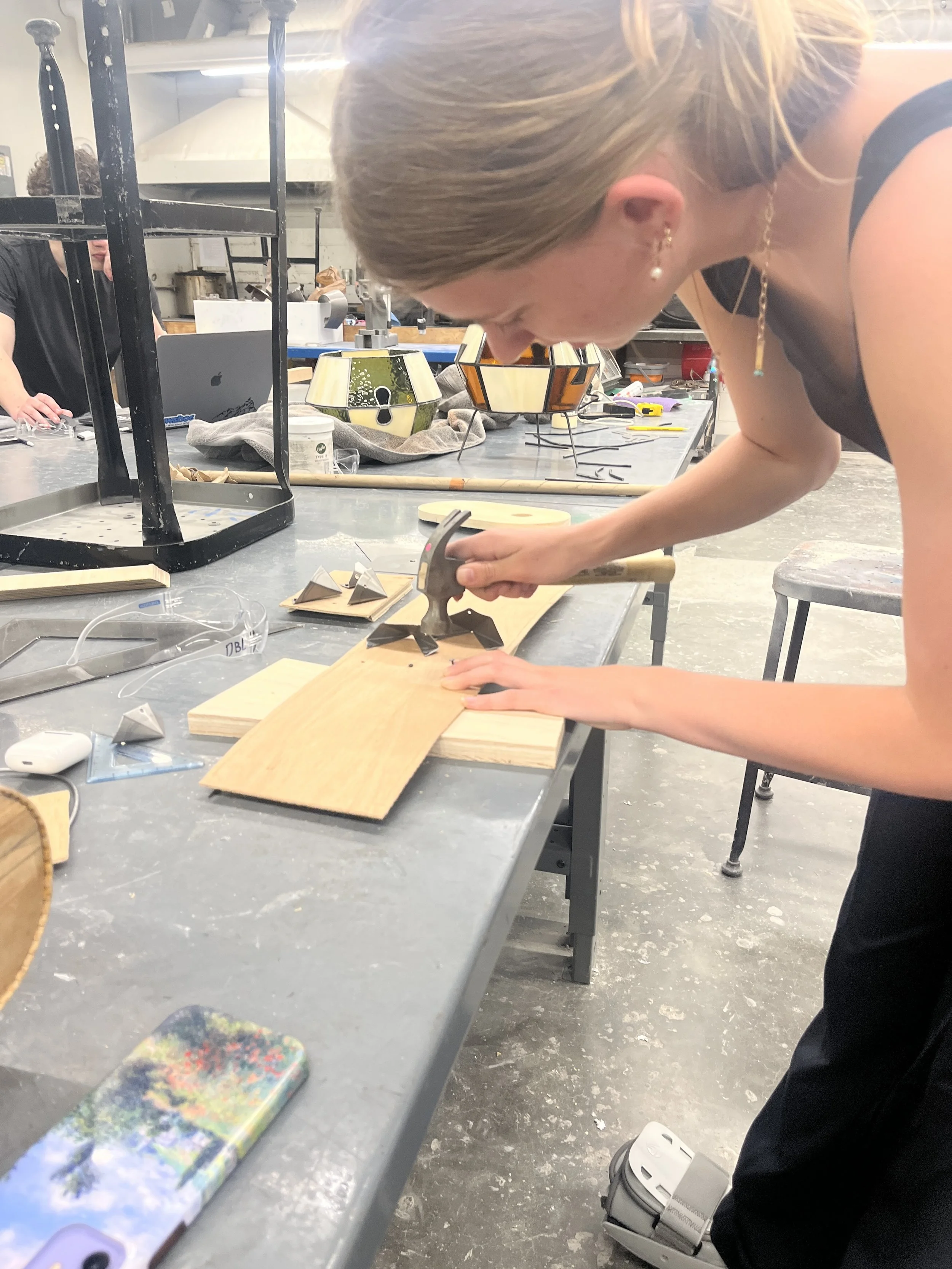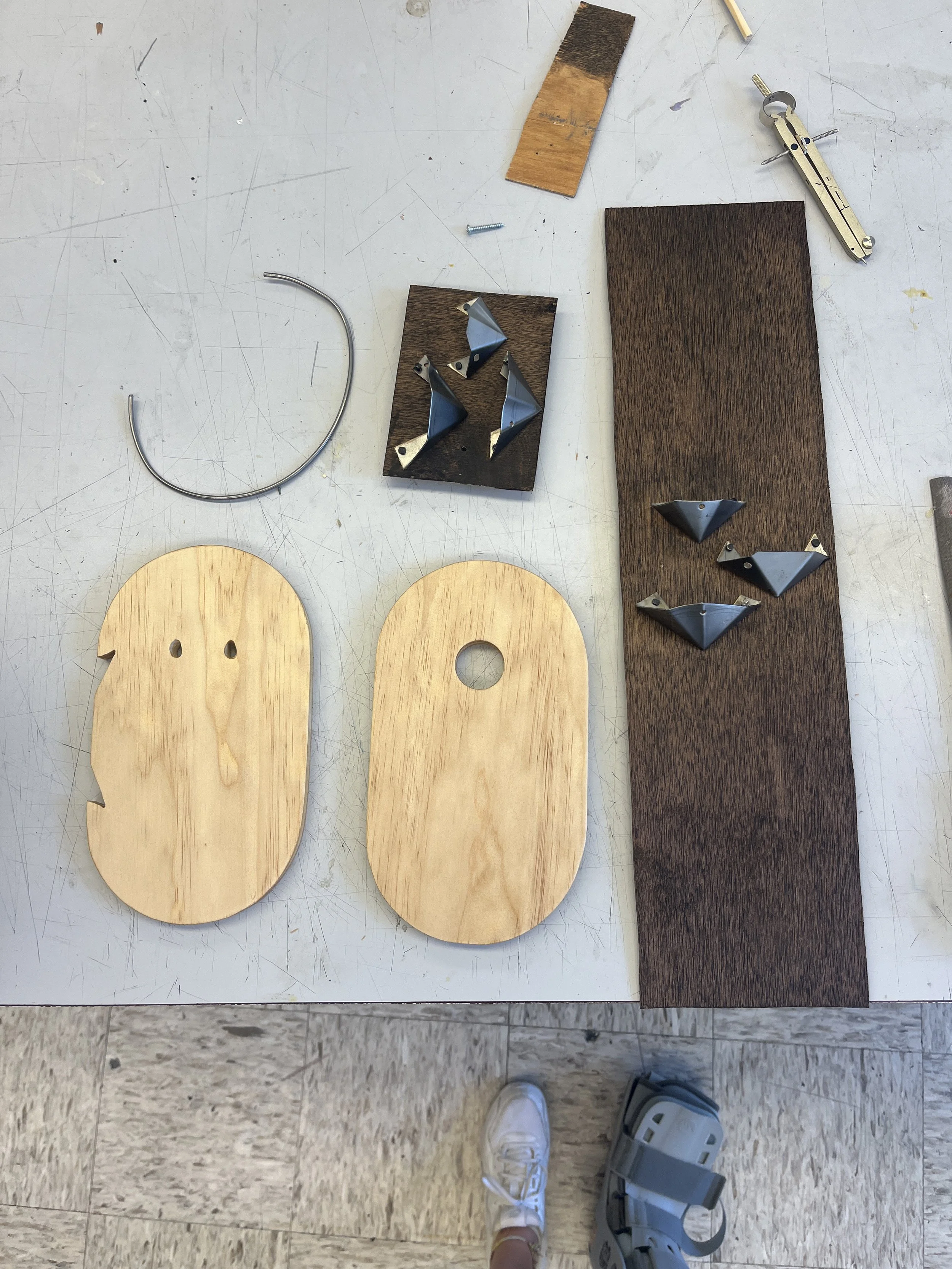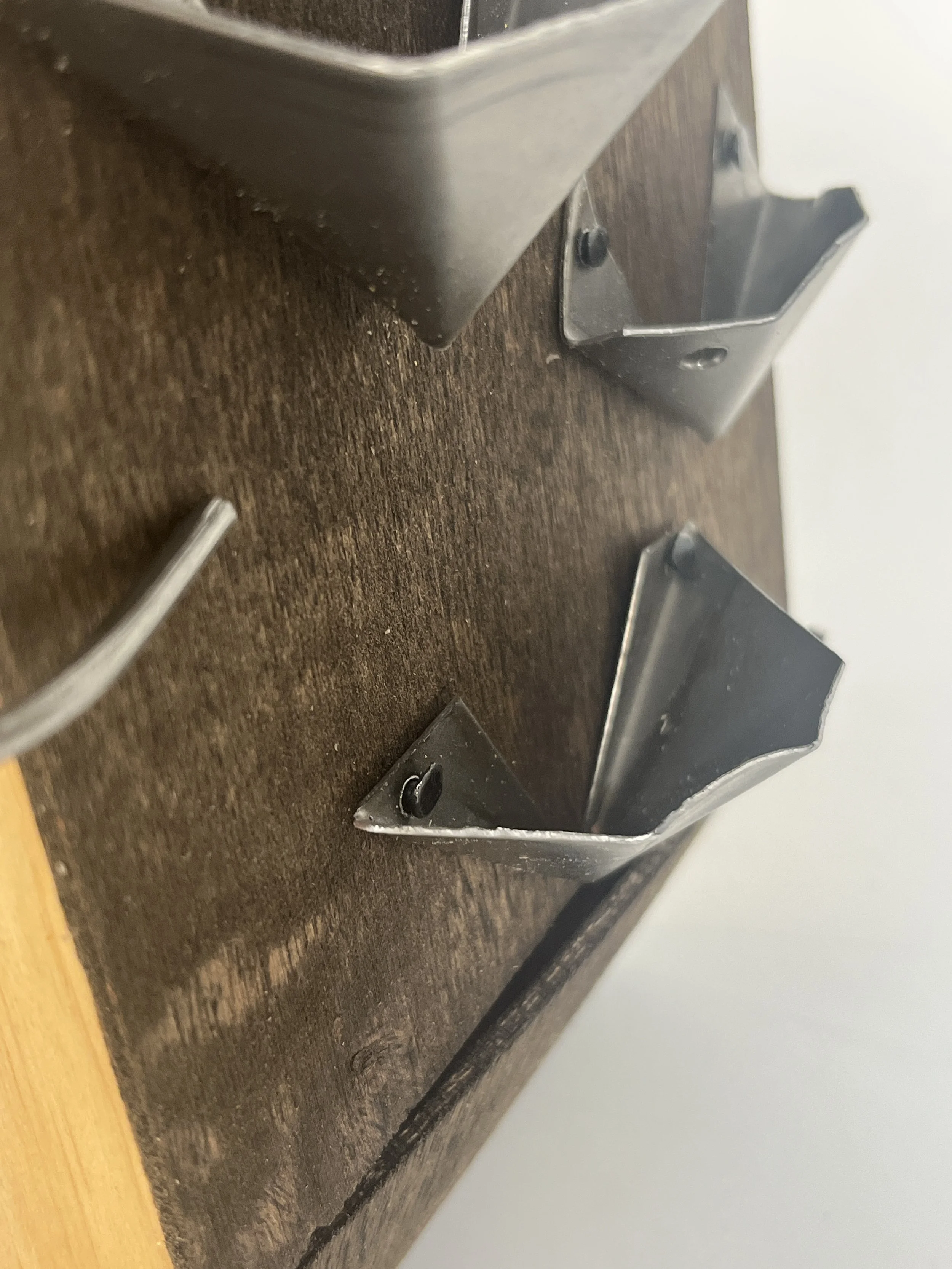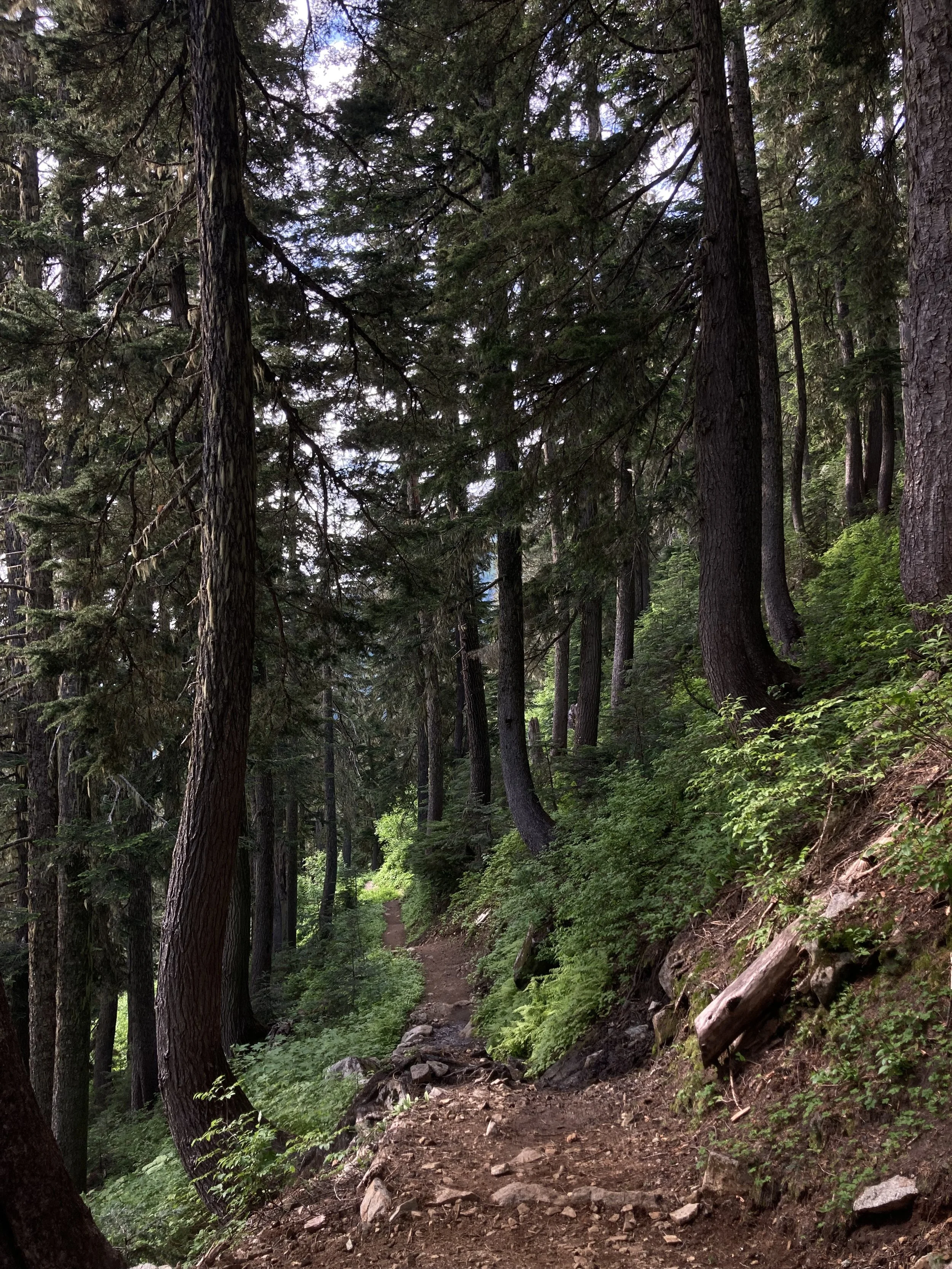
Flow
Project Intent: Create a visually appealing avian sanctuary that meets nesting, perching, and hydration needs of the Prothonotary Warbler while considering both users - the bird and the human.
Prothonotary Warbler Research
three dimensional Sketches
Narrowing down to a final form, representing final materials
Inspiration
Existing birdhouses, natural habitats, familiar features, water play
Ideation Sketches
Organic forms, compound materiality, dual purpose, geometric forms
Design Considerations
Outer perimeter of wood mimics the bark of a tree.
Metal cups on the side are modeled after natural fungi but also function as a water feature; holes allow water to drip through the upper cups and rest in the lower. Metal delays decay of that feature.
Wire serves as perch with a comfortable diameter for the bird’s grip.
Holes on back for ease of hanging, two for steadiness.
Sliding side panel allows human user to access inside for cleaning.
Perch is tension fit as it must be removable to allow side panel to slide - perch also serves to hold panel in place
Final Model assembly
Kerfing and moistening wood for bending, attaching metal cups, drilling entrance and hanging holes, cutting angled slots for sliding panel, attaching triangular rails to sliding panel, putting all the pieces together
Dimensions:
4-12 feet off the ground
Entrance size: 11/4” in diameter
Inner dimensions: 8 x 5.5 x 5.5 in
Perch: < 1 in diameter
Diet: flies, beetles, moths, butterflies, spiders, snails, and occasionally seeds, fruit, and nectar
Making the metal cups
Sketching plan, cutting shape, punching holes, bending facets
Nesting Habits:
Swampy or forested wetlands
Within 16 feet of moving water
Shaded natural cavities
Prefer bald cypress, willows, cypress knees; also enjoy pine houses
